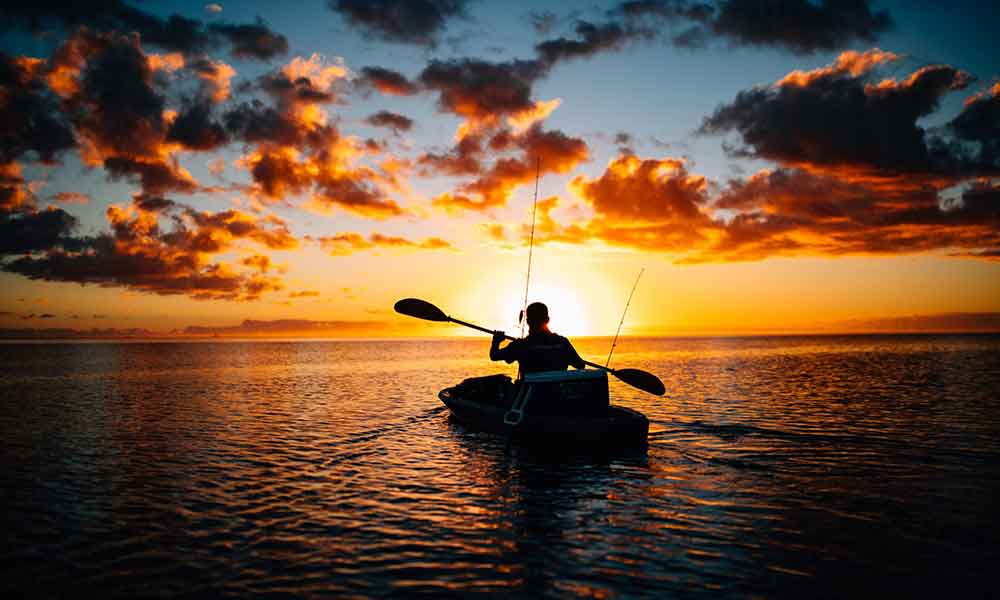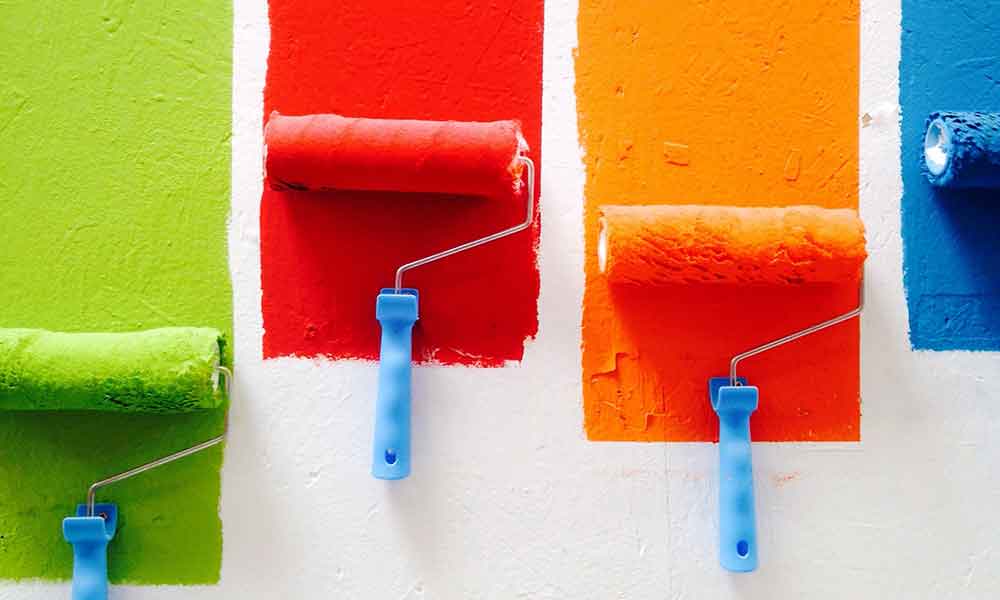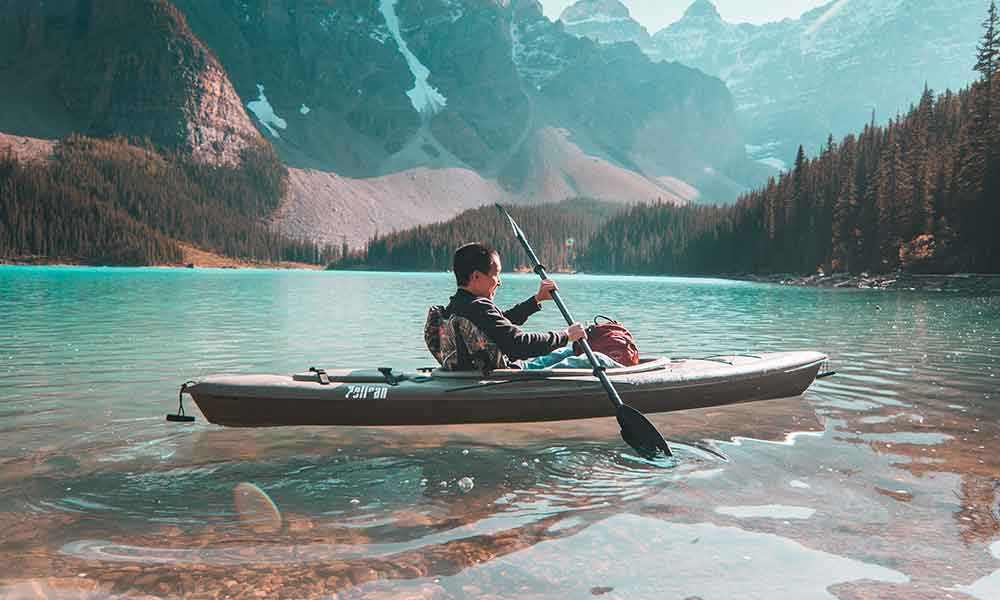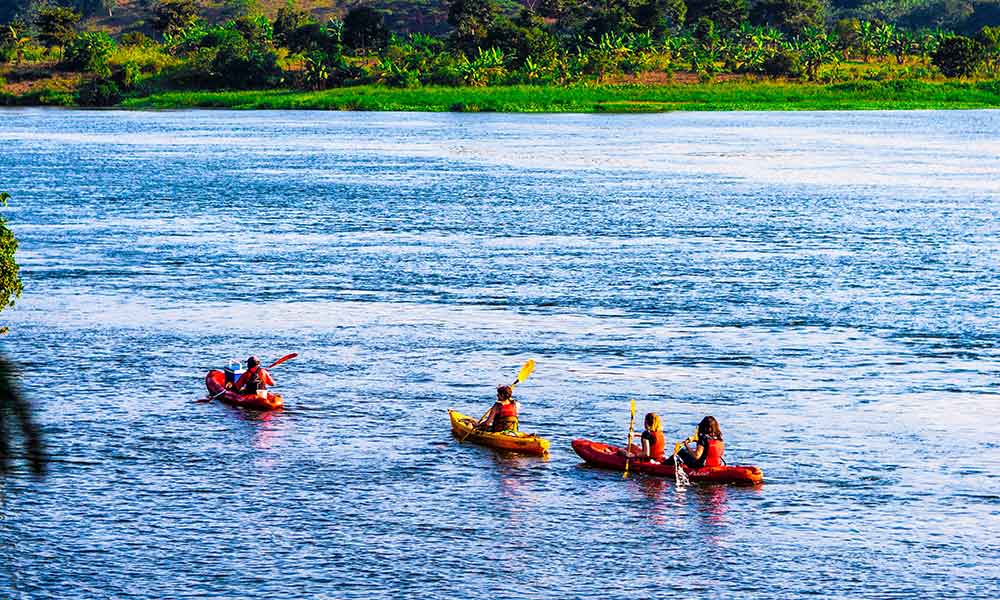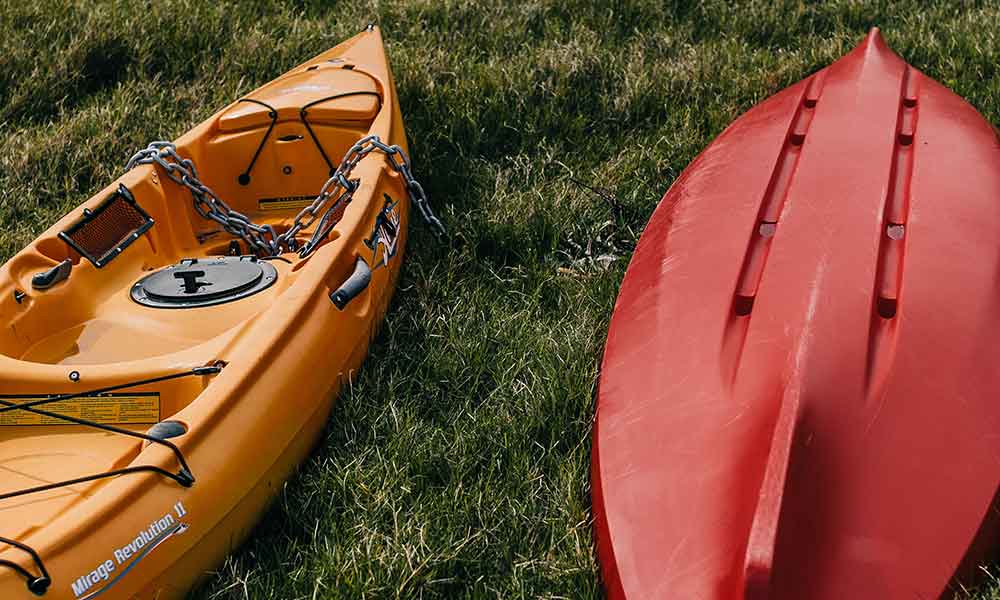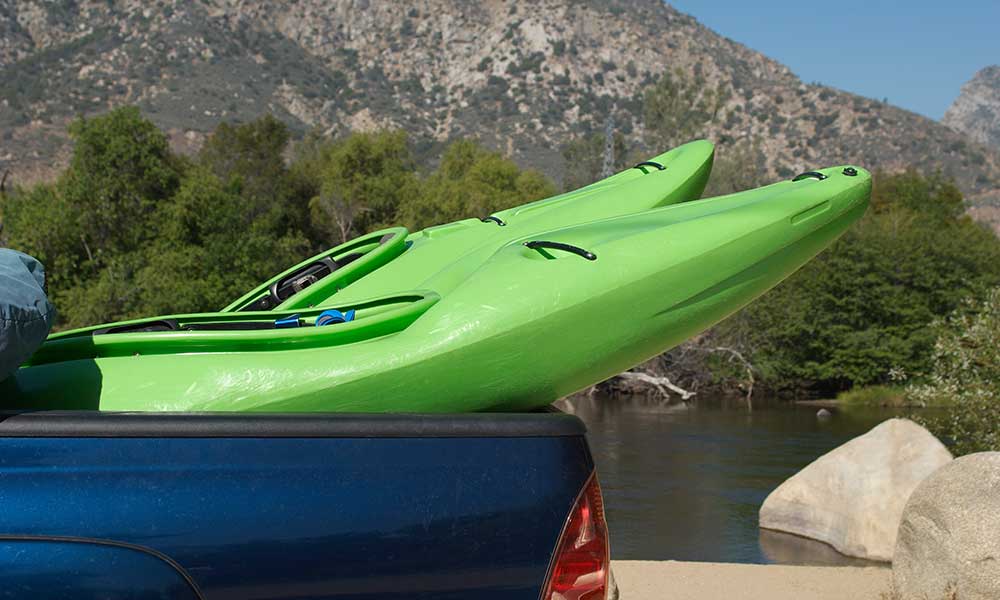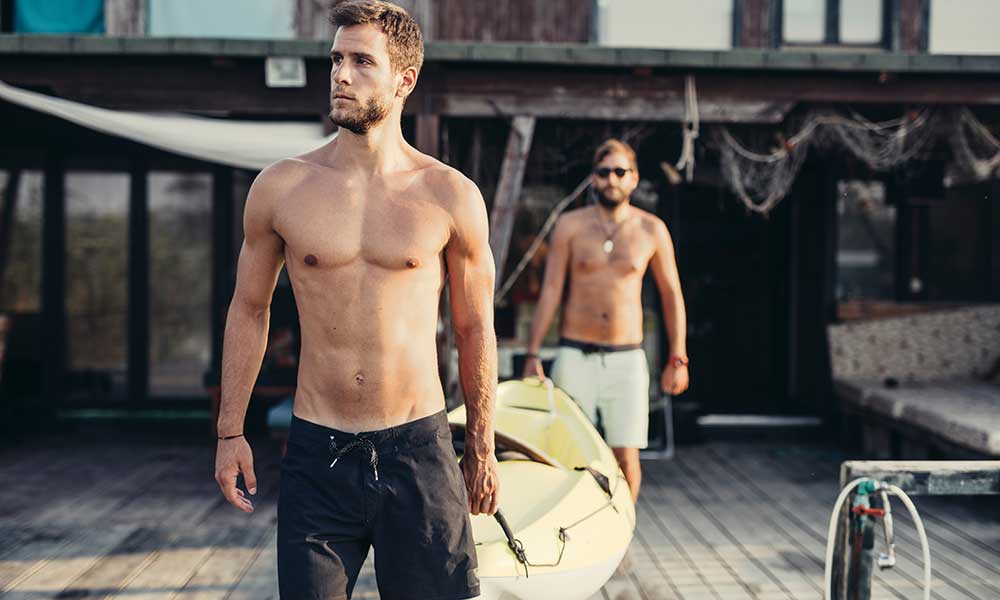If you are considering expanding your fishing into the realm of kayak fishing, there are some tips, tricks, and insight you need to know to make your kayak fishing experience better! You may also have some questions about doing certain fishing-related tasks while on a kayak, such as where you put your fish? We have some excellent tips, tricks, and advice to help answer some of these questions.
Fishing from a kayak is a combination of the right gear and using the right techniques for your type of kayak fishing. There are new methods and strategies to learn from choosing the right kayak, correct rod length, casting methods, landing the fish, storing the fish, and maneuvering your kayak.
Kayak fishing has become so popular that it has produced a niche industry in the fishing and kayaking worlds. As a result, suppliers have developed and offered new equipment, fishing kayak designs, and gear made specifically to meet kayak fishermen’s needs. So even if you are a seasoned kayak fisherman, you may pick up a nugget in our discussion.
Fishing From A Kayak Made Easy
Anglers accustomed to fishing from the shoreline or from a motorboat may be a little perplexed about how fishing from a kayak can be easy and pleasurable.
However, once you give kayak fishing a go, it opens up a whole new world of fishing, adding a new dimension of excitement and challenge to the activity!
We will be discussing some topics regarding questions that people new to kayak fishing may have. We will also cover how to perform certain fishing tasks while kayaking and the type of gear to look for to make your life easier!
Choose The Right Type Of Kayak
Of course, since we are talking about kayak fishing, the first and foremost important aspect is choosing the right type and style of kayak.
The kayak’s size and design will depend largely on the type of fishing you enjoy, coastal, inland, or river fishing.
The prudent advice here is to speak to other kayak fishermen or chat with your local fishing kayak supplier. Tell them what fishing you enjoy and ask for some advice on the best kayak for the job!
That being said, there are some primary features of a fishing kayak we can suggest you look out for that you will be grateful to have on your kayak.
- Storage compartments. Fishermen love gear, but space on a fishing kayak is at a premium, so the more compartments your kayak has for storage, the happier you will be. Ensure there are some watertight ones and the compartments are within easy reach from the kayak’s seat.
- Anchor trolley. An anchor trolley is of particular importance if you intend fishing in rivers where you may need to contend with currents and the river flow. An anchor will help you stay in one spot to explore a fishing location.
- Paddle clips. You need some way to secure your paddle to the kayak while both hands are occupied with fishing tasks. This can take the form of clips on the kayak that the paddle clips into when not in use or a place to attach a leash attached to the paddle. Failure to secure your paddle and you may find yourself up the proverbial creek without one!
- Rod holders. You may want to rig multiple rods and have them in the water simultaneously, or you need a place to secure your rods while paddling to a new fishing spot. Rod holders are a must-have on a fishing kayak!
- Mount for a trolling motor. Even if you do not anticipate using a trolling motor initially, it is nice to have the mounting facility on your kayak should you want to fit a trolling motor at a later date. If your kayak is not configured for a trolling motor fitment, it may be difficult or impossible to retrofit the kayak for a motor.
These are some of the main features to look out for on a fishing kayak that will make it easier for you out on the water.
How To Cast When Kayak Fishing
Casting is an important skill to get your lure where you believe the fish to be lurking! Fishing from a kayak adds a new dynamic to casting, so how do you do it?
You can cast in two ways from your kayak. You can cast from the seated position, which is quite natural when using a rod with a baitcaster reel, or you can cast from a standing position.
Spinning reels can be cast from a seated position, but my preferred casting position for a spinning reel is standing. I feel this gives a better distance and a better angle for side casts under obstacles such as overhanging trees.
Casting from a standing position will get you more distance and allow casting over obstacles, but if you prefer this casting position, you need a kayak that provides a stable platform. A wider kayak will offer greater stability for casting from a standing position, so if this is your preference, opt for a slightly wider kayak.
Use A Kayak Fishing PFD
A personal floatation device, or PFD, is an important piece of safety gear for a kayak fisherman. However, a PFD designed specifically for kayak fishing is much more than a personal safety device. A fishing PFD is the kayak fisherman’s tacklebox!
PFDs designed specifically for kayak fishermen come fitted with pockets, compartments, and equipment holders intended to make tasks such as rigging your rods so much easier while onboard your kayak.
Apart from storing personal gear and fishing lures and tackle, many PFDs have a foldout pocket on the front with a had shell, which becomes a workbench for the fisherman. You can open this pocket out and place lures, hooks, weights, and other gear on the hard surface while you tie knots and rig lines.
This may sound like a trivial feature to have, but only kayak fishermen realize what a great feature this can be on a PFD!
Standard life jackets or life vests have the safety features, but a kayak fishing PFD has all the cool features that make fishing from a kayak so much easier.
All your tackle and gear is close at hand without the need to fumble around with boxes and spools of line, all the while trying to prevent them from falling overboard!
How To Kayak While Fishing
Kayak fishing poses a dilemma for the fisherman. You need your hands to propel and direct the kayak, but you also need your hands to fish!
Use Paddle One-Handed
Several strategies and additional equipment for your kayak can help you with this problem. Many kayak fishermen have mastered the skill of using their paddle with one hand.
If you need to perform a quick adjustment to your position or turn the kayak for a better angle to fight the fish, one-handed paddling can be a useful skill.
This one-handed skill can be mastered with a little practice and determination and is the simplest way to direct your kayak while fishing.
Use A Peddle Drive On Your Fishing Kayak
Another option is to choose a kayak that is peddle-powered. Some fishing kayaks can accommodate a peddle mechanism that drives a small propeller under the kayak. This is a manual version of the trolling motor.
By controlling the peddles with your feet, you can propel the kayak forwards, reverse, and change direction. Peddling slowly in a current can help you maintain a steady position while you test a fishing spot!
Use A Trolling Motor On Your Fishing Kayak
The ultimate is a trolling motor, which is usually an electric motor that drives a propeller that will give your kayak forward, backward and directional movement. Some trolling motors can be controlled with one hand, while others can be controlled by your feet.
A trolling motor takes all the effort out of controlling the kayak while you concentrate on the fishing. It also allows you to travel further faster and without expending any energy.
Mounting a trolling motor on your kayak can be a challenge if your kayak is not designed to accept the mountings. You can use an aftermarket kit to adapt your kayak to accept a trolling motor, but it is best to use a kayak designed with the right fittings.
One thing to be aware of when using a trolling motor on your fishing kayak is that it can change the legal status of your kayak.
In many locations, adding a trolling motor to a fishing kayak changes the vessel’s status from a non-powered one to a powered one, and your kayak will need to be registered with the local authorities.
What Length Fishing Rods Should You Use For Kayak Fishing?
There is no limitation on the fishing rod length that you can use when kayak fishing, but certain lengths make more practical sense for kayak fishing.
Long rods can be cumbersome to handle in a kayak, especially if you will be traversing under overhanging vegetation.
On the other hand, a rod that is too short may pose some problems for maneuvering a fish on the line from one side of the kayak to the other.
The sweet spot for the best length rod to use is one that is about half the length of your kayak. Most fishing kayaks are typically between 11 to 12 feet in length, making the ideal rod length between 6 and 7 feet.
If a fish on the line goes under your kayak to the opposite side and you have no way to get the rod and line to the same side as the fish, it can be a recipe for a rollover in your kayak.
Use A Landing Net When Kayak Fishing
Many novice kayak anglers make the mistake of not using a landing net and try to reach for the fish with a free hand. This changes your body position in the kayak and can put you off balance, resulting in a rollover in your kayak.
The action of landing the fish is one of the most common causes of rollovers when kayak fishing, and it is something you want to avoid as far as possible!
The best way to land a fish in your kayak is to make use of a landing net. Many lightweight fishing nets are available, which are suitable for kayak fishing.
My personal preference is for a landing net with a telescoping handle. The extending handle gives me extra length when I need it but telescopes down to a manageable size for stowing on the kayak when it is not in use.
What Do You Do With Fish You Keep When Kayak Fishing?
Many kayak fishermen practice catch and release fishing, but sometimes by preference or circumstance, you need to keep the fish you catch. How do you store the fish on the kayak without it spoiling in the heat?
There are several options available to you for storing your fish on your kayak. The simplest solution is a small cooler loaded with ice lashed to the deck of your kayak. The best place for this is usually directly behind your seat to maintain the balance in the center of the kayak and make the icebox easy to reach.
Another option is ice loaded directly into a watertight compartment of your kayak. If the compartment is wide enough to accommodate fish as well as ice, it can be a useful option.
My favorite option is to use a fish bag, which is an insulated fish cooler, which can accommodate ice, or ice bricks, and keep them and the fish chilled all day long! They are usually made from a soft, insulating material that allows them to be stowed in a compartment or lashed to the deck without taking up much room.
Specialized kayak fish bags come in a range of shapes and sizes, which gives you a choice for a bag that best suits your kayak and storage location.
A couple of my favorites include the Precision-Pak Tournament Kayak Fishing Catch Cooler and the Buffalo Gear Large Portable Waterproof Kayak Fishing Fish Cooler Bag, which are both quality fish bags that I can recommend.
Must-Have Accessories On Your Fishing Kayak
There are some must-have fishing accessories that you should consider including in your kayak fishing gear. Some are essential, while others simply are so useful you will wonder why you never used them sooner!
- A first aid kit. A fist aid kit should be included as part of your gear and should be stowed within easy reach. A good place to store it is in a pocket of your PFD. When kayak fishing, you are dealing with sharp objects on an unstable boat. Accidents happen, and it is useful to have a bandaid or two available to help prevent infection!
- A fish finder. While a fish finder is not an essential piece of equipment, it is certainly helpful to find the fish, especially when fishing in deep water such as lakes or coastal fishing.
- A box crate. Strapping a box crate to the deck of your kayak is a useful way to quickly stow gear and prevent it from falling overboard.
- A good pair of pliers. A pair of pliers attached to your PFD is useful for removing hooks from fish, straightening hooks, and squeezing split shots onto the line.
- A good pair of cutters. I prefer a small, robust pair of wire cutters to cut lines rather than scissors. You can use a pair of proper scissors for this too, but whatever you use, keep them in an easily accessible location and have them on a leash.
- A good knife. A multipurpose knife that can the used to cut lines, fillet fish, and perform any other cutting tasks needed on the kayak is an indispensable tool.
Conclusion
Kayak fishing is an exciting and addictive form of fishing. It opens up the ability to explore a wide range of fishing opportunities that are not accessible from the bank or larger fishing boats.
Kayak fishing brings in the aspect of tracking down your quarry, much like hunting, and allows you to expand your fishing range. The right knowledge and the right gear help to increase the enjoyment that most fishermen find irresistible when out on their kayak!

